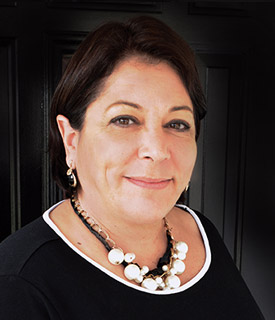Last summer, the federal government implemented a new crisis hotline: 988 for mental health or drug overdose emergencies. The hotline went operational on July 16th, 2022. Mental health advocates, suicide prevention advocates, and proponents of harm reduction efforts to address the opioid overdose crisis celebrated this important step. It showed that we, as a nation, have evolved to a place where we can prioritize mental health support – including suicide prevention and addiction treatment – with real funding and real programs, rather than forming working groups and commissions that hold meeting and publish reports.
In other words, the creation of the 988 Crisis Line was a victory for mental health advocates nationwide. This article will review the first year of operation, and offer the essential statistics: did it work? Were advocates right to celebrate?
Before we get to that data, let’s take a look at recent data on suicide and drug overdose, to review why we needed this crisis line in the first place.
2021: Centers for Disease Control (CDC) Facts and Figures on Suicide
- 47,646 total deaths
- 130 fatalities per day
- One suicide every 11 minutes
- 12.3 million people considered suicide
- 3.5 million people made a plan to attempt suicide
- 1.7 million people attempted suicide
Next, let’s look at the most recent reliable data on drug overdose.
Overdose Fatalities 2020-2022: CDC Overdose Dashboard
- 2020:
- All drugs: 92,478
- Opioids: 69,061
- 2021:
- All drugs: 107,573
- Opioids: 80,997
- 2022:
- All drugs: 108,500
- Opioids: 82,136
Finally, let’s look at the data on mental illness.
2021 National Survey on Drug Use and Health: Mental Illness Among Adults
- Any Mental Illness (AMI):
- 57.8 million
- Serious Mental Illness:
- 14.1 million
- Major Depressive Episode (MDE):
- 21.0 million
- Major Depressive Episode (MDE) with Severe Impairment:
- 14 million
That’s why we needed the crisis line: millions of people in the U.S. need mental health support and support in case of a drug overdose – support that doesn’t always require the full deployment of police and EMS services that a 911 call would trigger.
One Year of 988: How Many People Called?
Before 988, we had a suicide crisis hotline, called the National Suicide Prevention Line. That line had a ten-digit number: 1-800-273-8255. Launched in 2005 by the Substance Abuse and Mental Health Services Administration (SAMHSA), data shows the line was very busy:
- 2005: 46,000 calls
- 2017: 2,000,000 calls
That’s not a typo. That’s a four-thousand percent increase in twelve years.
Experts on mental health crisis knew we needed to expand our capacity and also simplify the number so people in crisis wouldn’t have to dial ten digits to get help. That’s why the federal government committed close to a billion dollars to establish 988: the current and future wellbeing or our citizens depended on it.
According to Dr. Emily Betz, the lifeline is for more than suicide:
“It’s for anyone who’s experiencing substance abuse, mental health crisis, emotional distress, or suicidal thoughts. You can call for yourself. You can call for someone in your family or a friend. It’s available 24/7, and it’s free and confidential.”
Let’s take a look at the data from the first year of 988, and find out if the line served its purpose.
One Year of 988 for Mental Health: Calls, Texts, and Chats
- 5 million combined texts, calls, and chats received/engaged
- Wait time:
- 2021: 2 minutes and 39 seconds
- 2022: 41 seconds
- July 2022 to July 2023: 665,000 texts answered
- Younger people prefer texted the line
- Oder people prefer called or used online chat
- Since adding a LGBTQIA+ counselor option in September 2022:
- 6% of callers chose the option
- 15% of texters chose the option
Based on that data, we’d say the initial mission is accomplished. However, two different polls conducted last year reveal disturbing news:
- A National Alliance on Mental Illness (NAMI)/Ipsos poll showed 82% of people either hadn’t heard of the 988 crisis line, or knew very little about it
- A Pew Charitable Trusts poll found only 13% of adults had heard of 988 and knew what it was for
We can do much better than that.
988 for Mental Health: The Path Forward
Currently, the hotline works by connecting over 200 local crisis centers through the central line. When a person calls, an operator – available 24/7/365 – answers the call and redirects the caller, based on their answers to key questions, to local support for their specific emergency. There are currently plans to add new centers to the network, which will bring the total to 215, nationwide.
The long-term goals for 988 include:
- Reducing wait time to under 30 seconds
- Connect callers to appropriate support quickly
- Reduce caller stress
- Help callers make health decisions
- Reduce unnecessary involvement of law enforcement
- Reduce need for 911-related EMS services
The first goal, however, is to make sure people know the line is there – and operators are standing by, ready to support people any time of the day or night. In the words of NAMI Chief Executive Officer Daniel Gillison, Jr.:
“If we want to help people in crisis – and save lives – 988 cannot be the best kept secret.”
Here’s a reminder of the basics of the new 988 line.
What is 988 and What is it For?
- The 988 Suicide & Crisis Lifeline provides free, anonymous support to people in mental health, overdose, or suicide crisis
- Operators are one-call, standing by 24/7/365
- The Substance Abuse and Mental Health Services Administration (SAMHSA) funds the crisis line
- The Lifeline is managed by Vibrant Emotional Health
- When you call the line, an operator connects you to one of 200 local centers – soon to be 215
- The goal is to connect people in emotional, suicide, or overdose crisis to local support that’s best able to help them right away
Overall, the emergence of 988 is a good sign – but the reasons we need it are anything but good. Mental health problems are increasing, suicides are increasing, and overdose deaths are increasing: that’s not good news. However, we now have the capacity – and the motivation – to meet the challenges presented by this increased need for emergency psychiatric support.
That is good news.
One year from now, we hope to report back on those poll numbers from above. Currently, only about 1/5th of the population knows about the crisis line. Hopefully, by September 2024, we’ll be able to report that everyone knows about it. Or, at very least, we hope those numbers flip, and we can report that 4/5ths of the population knows about the crisis line, and when to share it with someone in need.
Resources: Who to Call When You’re in Crisis
If you or someone you know is in crisis, please:
- Call or text 988 for the Suicide & Crisis Lifeline in a mental health emergency
- Access the chat online at https://988lifeline.org/chat
- Access crisis text Line by texting HOME to 741741.


 Gianna Melendez
Gianna Melendez Jodie Dahl, CpHT
Jodie Dahl, CpHT